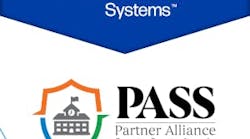April has become one of the deadliest months for school massacres and homegrown terrorist activities in the U.S. We’ve seen it before with tragic events that seared the names of these campuses into our minds:
- Virginia Tech, 33 deaths and 23 injured (April 16, 2007)
- Columbine High School, 15 deaths and 21 injured. (April 20, 1999)
- Oikos University, 7 deaths and 3 injured (April 2, 2012)
Than add to that:
- Oklahoma City Federal Building Bombing, 149 deaths and 680 injured (April 19, 1995)
- Waco siege, 78 deaths (April 19, 1993)
When it comes to publicizing mass, serial, or spree violence the fear of copycat behavior is always a grave concern. Is it possible that one maladjusted, mentally ill, violent, or suicidal teenager will read about these events and think this might be a useful solution to his life problems? Will that same child see the accompanying publicity and discussions from the usual collection of school, violence or mental health experts as something enviable and worth repeating on an even grander scale? If killing 15 people on a campus in Colorado will get the perpetrators on the covers of national magazines, is it possible another teen will realize he has to hurt even more people to both qualify for immortality and become the new yardstick for which future incidents will be measured?
School administrators, public officials and the general public need to be extra vigilant during this month. While attacks on campuses have garnered the most attention, we have to be ready to protect people in virtually every part of our society.
A gunman who killed two people at a Maryland mall in early March was believed to have a fixation with the Columbine shooting. He even dressed like one of the shooters and timed his attack to occur about the same time as the shooting in Columbine.
The media drives much of the frenzy. The 24-hour news cycles of many of today’s media outlets crave news to the point that anniversaries of tragic events result in lengthy reports of the original coverage. Ideally, the media would provide a short, dignified report on the anniversary. But in the news business, good photos and video are too hard to pass up using again and again.
Social media – including Facebook, Twitter and blog sites – are full of posts reminding the more impressionable among us of the planning these young men put into their deeds.
It’s become virtually impossible to ratchet down the sensationalism, the horror and the tragedy of these events. Our society will be living with the Murrah Federal Building, Columbine and Virginia Tech tragedies as long as there are people alive to remember them.
That leaves us with only one realistic choice; prepare for the worst.
Whether we are talking about schools or other areas where large numbers of people congregate, we have to get past the idea that “it can’t happen here.” It can and it may.
If we don’t act, our concern is that we will see the copycat individuals who are trying to make history at the expense of others. What can schools realistically do? Honestly, probably not a lot between now and the end of the month. But they can begin to prepare for that next terrible event. Here are a few pointers schools should implement as quickly as possible:
- All schools should have emergency/crisis plans and lockdown procedures in place, train staff, hold safety/security drills with emergency responders, and practice responses to different emergency situations, such as an active shooter on campus.
- All schools should have an assigned police officer. If not, a patrol plan that ensures a response within minutes to any and all types of school emergencies needs to be developed. If police are not available to be on site, off-duty police officers or unarmed contracted security officers should be considered.
- Work with a school security expert, in conjunction with administrators and local law enforcement, to complete a thorough risk assessment of all schools and campuses. The results of these assessments will be the initial phase to develop a course of action and a plan to secure each school.
- All schools, especially elementary schools, should be secured at all times. The main campus entrance should be controlled using security window and door screens and electronic access through a video intercom system. Allow access only to those who belong on campus – students, teachers, staff, parents, volunteers and contractors while keeping out the unwanted visitors: sexual predators, kidnappers, thieves and others. All entry, exit, and classroom doors should be locked throughout the day.
- Once a visitor is approved to enter the building, he or she must immediately check in at the office. Before a temporary badge is printed for the person to wear at all times while on campus, he or she must show government-issued identification for screening purposes. There are visitor management systems that tie directly into FBI, state, and local law enforcement databases to check for criminals and registered sex offenders. It is also easy to program local exclusion alerts, such as fired employees and suspended/expelled students. Temporary restraining orders can be included to help prevent a non- custodial parent from removing a child from the campus.
- Frequently test your communication/fire systems, PA system, phones, radios, duress buttons, fire alarms and other devices. Cameras in and around schools have proven to be a strong deterrent and very effective in helping to ensure policies and procedures are being followed, as well as in assessing incidents. They also provide a critical live insight for first responders during an emergency situation.
In the long run, we need to create minimum federal standards for school security. As we stand today, we have some schools that have made good efforts, some that have taken a few steps in the right direction and others that have done virtually nothing to protect their students. The safety of our children on campus should no longer be left solely up to the whims of local school board members.
Of course, federal mandates will also require federal assistance. And that will require pressuring our members of Congress to make the money available – even if it means taking funding from some other programs.
This April, let’s dedicate ourselves to ending the senseless violence that has so dominated this month.
About the Authors: Patrick V. Fiel, Sr. is a security consultant. He has over 30 years of experience in law enforcement and security. He has served as the public safety advisor for a large security integrator, executive director of security for the Washington, D.C. Public School System, and is retired from the U.S. Army Military Police Corps. He can be reached at (910) 789-4265 or at [email protected].
Dr. Steve Albrecht manages a San Diego-based training, coaching, and management consulting firm. As a trainer, speaker, author, and consultant, Albrecht is internationally recognized for his expertise in high-risk HR issues. He is former police officer and has taught at several California universities. He can be reached at 619-990-2685 or at [email protected].


